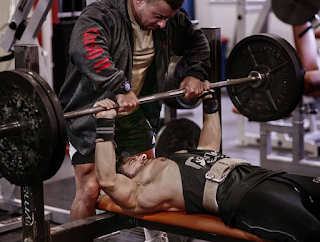Why should you use the best Olympic weightlifting Belt?
We live in a world where people recognize that bodybuilding is an intense workout. To keep your back safe from injuries, you must wear a weight lifting belt while lifting heavy weights during a workout. However, health enthusiasts are still confused about why to wear a belt.
Newbies wearing belts on their first day of gym and trainers lifting weights without belts are common in gyms. The problem here is not the unawareness of when to wear the belt but why to wear them. So we are here to clarify the confusion; read more to find out the workouts that demand the best weightlifting belts and their benefits to your body.
How do belts support our bodies?
Ensure proper form: it is common among lifters to injure themselves during weightlifting. The leading cause of injuries during physical activity is the lack of appropriate form. If all the muscles are in the correct position, swelling or injuries won’t happen to you. And wearing a belt will keep your lower back and abdominal muscles, the ones that require the most support, in the correct position.
Reduce training stress: When you work out for an extended period or do training for a long time, your muscles become sore. That will make you tired quickly and hinder you from attaining your weightlifting goals. However, if you have a weightlifting belt on, it will protect your muscles from training stress.
The benefits of using a belt do not end here; however, you should be aware of these two benefits if you are a bodybuilder.
What exercises demand belts?
If you are a fitness health fanatic, you know how helpful belts are for your spine while lifting heavyweights. But all the exercises do not require belts; it adds additional weight to your body for some activities. So here is a list of exercises that require a weightlifting belt.
Deadlift: You have to pick up dead weight from the ground in this activity, and it is very unsafe for your torso. Wearing a belt is the only solution to that problem; it supports the torso and backbones throughout the activity.
Regular squats: It demands a lot of forward and backward movement of your muscles. And doing it frequently for a considerable amount of time can cause muscular pain. To avoid that and to get athletic coverage, wear a belt during squats.
Barbell Rows: It is a more intense workout than deadlift and moves your muscles a lot. Use a good quality belt to avoid extensive pain after the activity and give your spine and backbone extra protection.
Use belts when the body demands!
Don’t consider belts essential protection for your body during physical activities; these belts are also heavy. You should only wear those when you are doing a workout that demands it; however, don’t avoid them when needed. Get the best Olympic weightlifting belts to ensure extra protection throughout your workout schedule. Visit Gunsmith fitness to know more about the best weightlifting belts.


Comments
Post a Comment